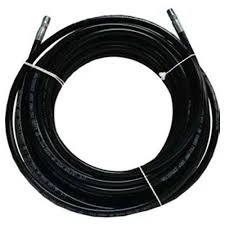Understanding Compression Pipe Couplings for Efficient Plumbing Solutions and Installations
Understanding Compression Pipe Couplings A Comprehensive Guide
In the world of plumbing and piping systems, the integrity and efficiency of connections are paramount. One integral component that plays a crucial role in ensuring effective piping systems is the compression pipe coupling. This article will delve into what compression pipe couplings are, their types, applications, advantages, and installation process, providing a thorough understanding of this vital plumbing accessory.
What is a Compression Pipe Coupling?
A compression pipe coupling is a fitting that allows two pipe sections to connect securely without the need for welding or soldering. The basic principle of a compression coupling is quite simple it uses a compression nut and a ring, usually made from brass or plastic, to secure the connection between two pipes. When the nut is tightened, the ring compresses against the pipe, creating a watertight seal that prevents leaks.
Types of Compression Pipe Couplings
There are various types of compression pipe couplings available, suited for different applications and materials
1. Brass Compression Couplings Known for their durability and resistance to corrosion, brass coupling is commonly used in water supply and plumbing applications.
2. Plastic Compression Couplings Often used in drainage systems, these couplings are lightweight and resistant to chemical corrosion, but they may not be suitable for high-temperature applications.
3. Copper Compression Couplings These are typically used in refrigeration applications due to copper's excellent thermal conductivity and resistance to high pressures.
4. Stainless Steel Compression Couplings With superior resistance to rust and corrosion, stainless steel is used in industrial applications where durability is crucial.
5. Push-to-Connect Couplings A newer innovation, these couplings allow for quick connections without tools. They are particularly useful in tight spaces and provide a secure fit with easy disengagement.
Applications of Compression Pipe Couplings
Compression pipe couplings find a variety of applications across both residential and commercial settings
- Water Supply Lines They are commonly used in plumbing to connect water supply lines, ensuring a leak-free operation.
- Heating and Cooling Systems In HVAC systems, compression fittings connect copper tubing for efficient fluid transfer.
- Refrigeration Lines The use of copper compression couplings in refrigeration lines ensures the integrity of refrigerant flow
.- Industrial Systems Many industries utilize compression couplings for their hydraulic and pneumatic systems, where reliable connections are essential.
compression pipe coupling

Advantages of Compression Pipe Couplings
Compression pipe couplings offer several benefits, making them a preferred choice for many plumbing and piping applications
1. Ease of Installation One of the most significant advantages of compression couplings is the straightforward installation process. They can be installed quickly without requiring specialized tools or skills.
2. Reusability Unlike soldered connections, compression fittings can be disassembled and reused, making maintenance and upgrades to piping systems easier.
3. Reliable Sealing When properly installed, compression pipe couplings provide a reliable seal that minimizes the risk of leaks, ensuring optimal system performance.
4. Versatility Compression fittings are compatible with various pipe materials, including copper, PVC, and PEX, making them suitable for diverse applications.
5. Space Efficiency The compact design of compression couplings allows them to be used in tight spaces where larger fittings would be impractical.
Installation Process
Installing a compression pipe coupling is a relatively simple process that can typically be completed in a short time. Here are the basic steps involved
1. Preparation Ensure that the ends of the pipes are clean and free from debris. Cut the pipes to the desired length if necessary.
2. Insert the Sleeve and Nut Slide the compression nut and then the compression sleeve onto the end of the pipe.
3. Insert the Pipe into the Coupling Place the end of the pipe into the coupling.
4. Tighten the Nut Hand-tighten the nut to secure the sleeve against the pipe. Use a wrench to tighten further, but take care not to overtighten, as this may cause damage.
5. Check for Leaks After installation, turn on the water supply and inspect the joint for leaks.
Conclusion
Compression pipe couplings are essential components in modern plumbing and piping systems. Their ease of installation, reusability, and reliability make them a valuable choice for a variety of applications. Understanding their types, applications, and the installation process can empower users to make informed decisions when working on plumbing projects. Whether for residential use or industrial applications, compression couplings continue to play a significant role in ensuring efficient and durable piping systems.
-
Ultimate Spiral Protection for Hoses & CablesNewsJun.26,2025
-
The Ultimate Quick-Connect Solutions for Every NeedNewsJun.26,2025
-
SAE J1401 Brake Hose: Reliable Choice for Safe BrakingNewsJun.26,2025
-
Reliable J2064 A/C Hoses for Real-World Cooling NeedsNewsJun.26,2025
-
Heavy-Duty Sewer Jetting Hoses Built to LastNewsJun.26,2025
-
Fix Power Steering Tube Leaks Fast – Durable & Affordable SolutionNewsJun.26,2025

